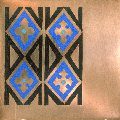

|
Technique de l'émail champlevé
|
L'émail champlevé pratiqué surtout au Moyen Age en Limousin et dans les régions rhéno-mosanes, est une technique d'orfèvrerie généralement appliquée au cuivre car nécessitant un support de métal de forte épaisseur. Elle consiste à creuser des cavités dans lesquelles sera déposé l'émail en poudre. Après cuisson, l'émail vitrifié se solidarise avec son support. Le ponçage égalise la surface, la dorure masque l'apparence vile du métal.
The "champlevé" enamelling technique, practiced throughout the Middle Ages at Limoge and in the rhéno-mosane region, is a production technique based on a copper ground It consists of excavating cavities in the copper into which the enamel powder is deposited and then melted onto the supporting metal. The surface is ground and polished giving a flat surface, the gilding then masks the original appearance of the metal ground.
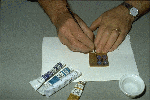
|
Préparation de la maquette Preparation of the pattern |
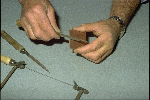
|
Préparation du support de cuivre Preparing the copper base |
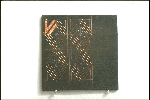
|
Tracé du motif Tracing the design |
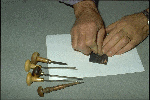
|
Creusement des cavités au burin et à l'échoppe Excavation of the cells with a burin and gouge Un exemple du XIIIe siècle |
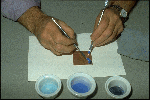
|
Pose des couleurs dans les cavités
(émail en poudre lavé, utilisé humide) Placing powdered enamel colours into the cells (the enamel is powedered and mixed in water) |
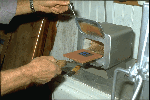
|
Cuisson Firing the enamel |
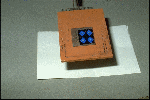
|
A la sortie du four On leaving the firing oven |
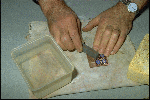
|
Ponçage Grinding and polishing |
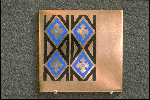
|
Après ponçage After polishing |

|
Gravure du motif vermiculé |
Quelques exemples médiévaux Engraving the vermicule pattern | Some mediaeval examples |
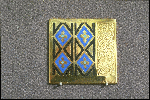
|
Après dorure After gilding |